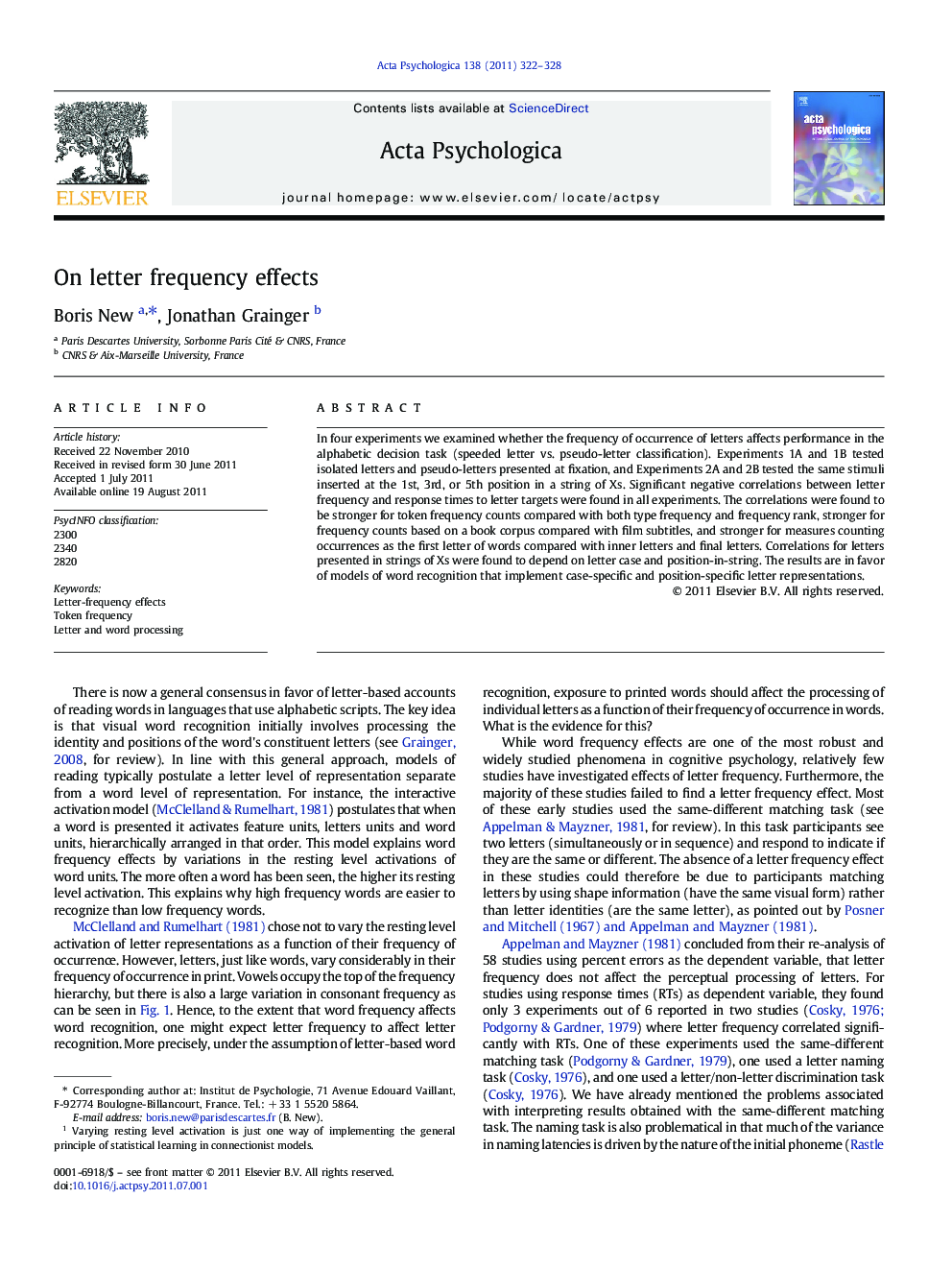| Article ID | Journal | Published Year | Pages | File Type |
|---|---|---|---|---|
| 919987 | Acta Psychologica | 2011 | 7 Pages |
In four experiments we examined whether the frequency of occurrence of letters affects performance in the alphabetic decision task (speeded letter vs. pseudo-letter classification). Experiments 1A and 1B tested isolated letters and pseudo-letters presented at fixation, and Experiments 2A and 2B tested the same stimuli inserted at the 1st, 3rd, or 5th position in a string of Xs. Significant negative correlations between letter frequency and response times to letter targets were found in all experiments. The correlations were found to be stronger for token frequency counts compared with both type frequency and frequency rank, stronger for frequency counts based on a book corpus compared with film subtitles, and stronger for measures counting occurrences as the first letter of words compared with inner letters and final letters. Correlations for letters presented in strings of Xs were found to depend on letter case and position-in-string. The results are in favor of models of word recognition that implement case-specific and position-specific letter representations.
► A robust frequency letter effect was found in four alphabetic decision experiments. ► Letter frequency was found to influence RTs to both lowercase and uppercase letters. ► Token frequency predicted RTs better than type frequency or frequency rank. ► Book-based frequency measures worked better than film subtitle measures. ► Letter-in-string frequency effects depended on letter case and position-in-string.
